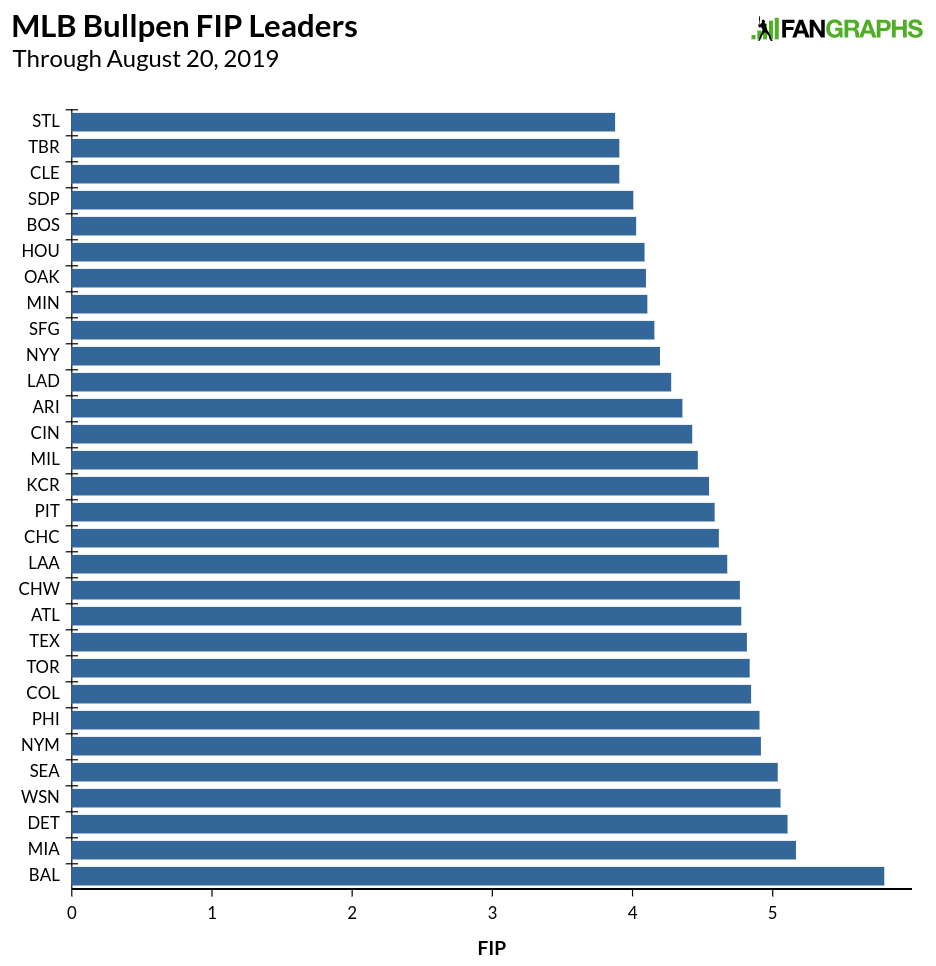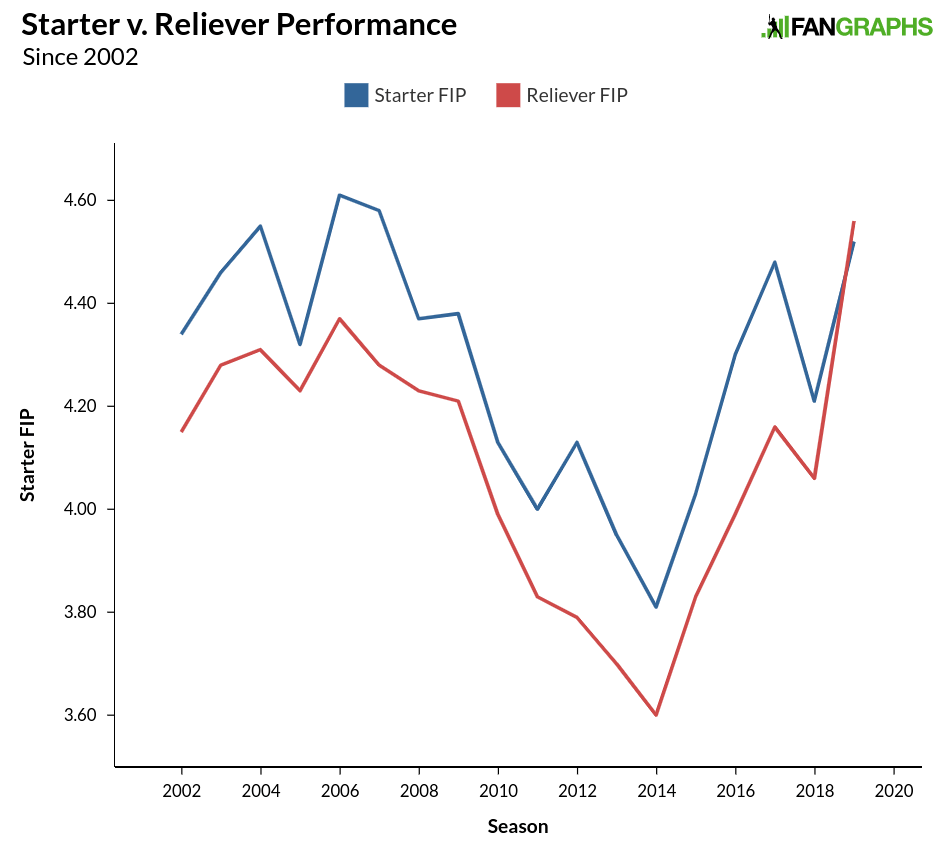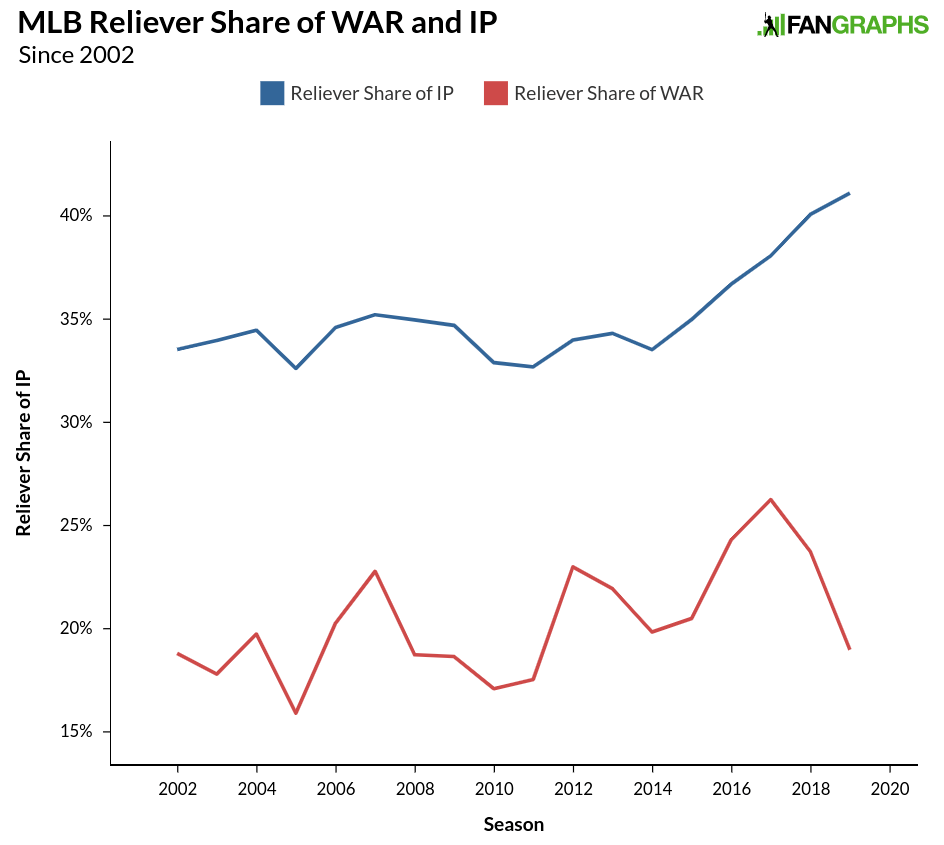Author Archive
Rumored Royals Sale Would Rank Among Most Profitable
On Tuesday, Ken Rosenthal and Jayson Stark reported that Royals owner David Glass was discussing a potential sale of the baseball team to John Sherman, who currently owns a minority interest in the Cleveland Indians. Jeff Passan is reporting the deal would be worth more than a billion dollars, which could potentially exceed Forbes’ estimate from earlier in the year. In very related news, Jeffrey Flanagan of MLB.com reported that the Royals are close to an extension of their television rights with Fox Sports Kansas City that were set to expire after this season. That deal, worth an estimated $50 million per season, looks light in relation to recent deals. Combined with the news of a potential sale, it seems possible the Royals have opted for a lesser television deal in favor of certainty in order to sell the team.
The potential television deal will be addressed later in this piece, but the bigger news is clearly the potential sale. Glass purchased the team for $96 million back in 2000, and if he were to sell the team for a billion dollars, it would be one of the most profitable sales in the history of the sport in sheer monetary terms. The graph below shows all sales of MLB franchises since the Orioles were sold back in 1988. During that time, every team except for the Yankees, White Sox, Twins, and Phillies have been sold, with the Diamondbacks and Rockies still with their original ownership group in some form. There have been 33 sales, with the Royals a potential 34th transfer.

The graph above can be a bit misleading as inflation and the amount of time a team has been owned can greatly affect the numbers above. The sale of the the Dodgers is still the biggest on the list, with the Mariners coming in second, and even after accepting a deal at only 75% of the rumored price, Jeffrey Loria’s profit on the Marlins was enormous. The average profit on a sale over the last 30-plus years (without the Royals) has been $306 million. Over the last decade, seven sales have averaged $900 million in profits. Read the rest of this entry »
Yoán Moncada’s Quiet Breakout
Maybe his breakout has gone a bit unnoticed because his name broke out when inked to a huge signing bonus four years ago. Maybe it’s quiet this season because three years ago, he was involved in one of the biggest trades of the decade and the next spring he was the top prospect in all of baseball. In his first year and a half in the big leagues, he was merely an average player. He’s playing this season on a non-contending team and he’s lost time due to injury, but in the 100-plus games he has appeared in, Yoán Moncada has not just been one of the game’s most-improved players, he’s been one of the 10-best position players in baseball.
To provide some sense of where Moncada rates among today’s players, let’s start with the youngest set. Here are the best 2019 campaigns from players 25 years old and younger (all stats are through games on August 26):
| Name | Age | PA | HR | wRC+ | WAR |
|---|---|---|---|---|---|
| Cody Bellinger | 23 | 545 | 42 | 166 | 6.8 |
| Ketel Marte | 25 | 556 | 27 | 142 | 6.0 |
| Alex Bregman | 25 | 561 | 32 | 158 | 5.9 |
| Rafael Devers | 22 | 569 | 27 | 142 | 5.4 |
| Ronald Acuña Jr. | 21 | 613 | 36 | 130 | 5.0 |
| Yoán Moncada | 24 | 425 | 22 | 136 | 4.2 |
| Peter Alonso | 24 | 552 | 41 | 147 | 4.2 |
| Juan Soto | 20 | 530 | 29 | 143 | 4.0 |
| Francisco Lindor | 25 | 512 | 23 | 120 | 3.9 |
| Paul DeJong | 25 | 538 | 24 | 106 | 3.7 |
| Fernando Tatis Jr. | 20 | 372 | 22 | 149 | 3.6 |
| Gleyber Torres | 22 | 505 | 33 | 132 | 3.5 |
There are only three players younger than Moncada with a higher WAR this season. Rookie Peter Alonso is having a monster season, yet Moncada has been just as valuable. Given Moncada’s lesser playing time, he’s arguably been better than Alonso and a cut above a rising star like Juan Soto and a no-doubter like Francisco Lindor. How about his ranks among third basemen, Moncada’s new position this season? Read the rest of this entry »
José Ramírez Injury Deals Big Blow to Cleveland’s Playoff Hopes
After struggling for the first few months of the season, both José Ramírez and Cleveland broke out in a big way with Ramírez discovering his old form and Cleveland going on a big run to catch the Minnesota Twins for first place at one point this month. Cleveland couldn’t quite keep up that pace over the last few weeks, falling a few games back of the Twins, but still looked to be in great shape for the wild card race. With news of a broken hamate bone and the resulting surgery for Ramírez, the team is losing their best hitter for the rest of the season, leaving a massive hole in the lineup and at third base. The club’s path to the playoffs just got a lot more narrow.
Just two weeks ago, I discussed the remarkable turnaround Ramírez made in his game, eschewing an approach designed to be beat the shift but costing him power and going back to the pull-heavy, fastball-hunting approach that made him a star in the first place. In the second half of the season, Ramírez has put up a 168 wRC+ to go with 2.3 WAR that ranks behind only Anthony Rendon, José Altuve, Mike Trout, and Ketel Marte among position players. On the season, Ramírez had finally moved his wRC+ up to 100, and with solid baserunning and fielding, he was up to 2.9 WAR on the season. These totals are a huge drop from the 6.4-WAR average he produced over the three previous seasons, but 2019 was still shaping up to be a productive year despite his awful start. Unfortunately, Ramírez isn’t likely to get any more time to improve his numbers further.
One month of any one player isn’t likely to matter a whole lot to a team’s playoff chances over the course of an entire season, but when there’s only 31 games left and the player in question was set to be worth a full win over those 31 days and his substitutes are replacement level, that month can matter a great deal. To provide some sense of what Cleveland loses in terms of projections and playoff odds, here’s where the club stood after Saturday’s games compared to where they stand now with Ramírez’s injury factored in. Read the rest of this entry »
Did the Cardinals Get Robbed of a Chance at a Win?
On Wednesday night, the Cardinals trailed the Brewers 5-3 entering the eighth inning. As the home team, St. Louis went back out on defense to start the frame. Lefty Tyler Webb retired the Brewers on eight pitches. Before the Cardinals could take their turn at the plate in the bottom of the eighth, however, it started raining. Confusion and more rain ensued.
Now, the Brewers had come up to bat in the top of the eighth, so the Cardinals were supposed to get a chance to at least finish the inning, right? That’s what the press box in St. Louis was originally told, but that statement was clarified.
OK, here we go. Got clarification. The below is wrong — with a caveat. Since the #Brewers had the lead before the start of this interrupted inning, this game could go final, by rule. By PRACTICE, they have waited to give the home team as many at-bats as the visitor with the lead https://t.co/xLm2WiypkN
— Derrick Goold (@dgoold) August 22, 2019
As for the rule, MLB’s website states:
If a regulation game is terminated early due to weather, the results are considered final if the home team is leading. If the home team is trailing, the results are considered final if the game is not in the midst of an inning when the visiting team has taken the lead.
The rule is fairly clear that since the Brewers began the eighth inning with the lead, once the game is terminated, the Brewers get the win. A suspension to pick up the game at a later date wasn’t an option for this game. As Derrick Goold indicated above, general practice is to let the home team get as many cracks at scoring as the visiting team. If the game were to continue, the teams would have had to wait until at least 11:30 or 12, when the rain got lighter and died down. The Cardinals remained at home for their next game while the Brewers made the trip back to Milwaukee with an offday before their game on Friday. While I can’t say whether or not the result was fair, or look up all the instances in which games were delayed and then continued and to which this rule might have been applied, we can go back and look at all the instances when a game was terminated. Read the rest of this entry »
The Best Bullpens in Baseball
After finishing up some research noting the wide gap between the quality of relief innings depending on the importance of the situation this season, it felt necessary to take a similar look at team performance. If teams were deploying less-good relievers in low leverage situations and good ones in high leverage situations, it could distort our sense of the quality of a bullpen when looking at overall numbers.
We’ll start with a pretty generic view of bullpens this year, with FIP by team:

The Cardinals have the lowest FIP of any bullpen this season, as the group as a whole has pitched very well. The Rays coming in second and first in the American League is somewhat of a surprise given their use of an opener in half their games; they are losing about 60 good relief innings and replacing them with around 180 good-but-not-as-good starting pitching-type innings. The teams fall down in a nice cascade the rest of the way, with the Baltimore Orioles providing a a very heavy base at the bottom of baseball.
But not all innings are created equal, and some of the innings pitched by bullpens are more important than others. If we separate meaningful innings (medium leverage and high leverage) from less important innings (low leverage), we can get a sense of how good a team’s bullpen is when it matters. This also could provide a better sense of which teams might be better prepared for the playoffs, given the consolidation of relief innings in October:

The Real Reliever Problem
With so many variables, isolating specific trends in baseball can be tricky. Relievers have been pitching more and more innings. Strikeouts keep going up. The ball has been juiced, de-juiced, and re-juiced, making home run totals hard to fathom and difficult to place in context, both for this year and for years past. One noticeable aspect of this season’s play, influenced by some or all of the factors just listed, is that relievers are actually performing worse than starters. Our starter/reliever splits go back to 1974, and that has never happened before. Here is how starter and relievers have performed since 2002:

A healthy gap between the two roles has existed for some time, but seems to have taken an abrupt turn this year. Ben Clemens looked at the talent level between starters and relievers earlier this season in a pair of posts that discussed how starters are preparing more like relievers, as well as the potential dilution of talent among relievers. The evidence seemed to point toward the latter theory, though exactly how that dilution has affected performance comes in a rather interesting package. Providing some evidence for the dilution effect is the number of innings handled by relievers in recent seasons. While the idea of starters pitching better than relievers is a new one statistically, the trend of increasing reliever innings likely made this year’s change possible. Below, see the share of reliever innings and reliever WAR since 2002:

José Quintana Is on the Attack
The 2019 season has seen a Cubs team be good, but not great, in most aspects of the game. The offense is solid, the rotation has been above average, and the defense is performing well. The bullpen has been really bad, but the other aspects of the club have carried the team to a 66-58 record tied atop the National League Central. In the rotation, the team has received solid-but-not-spectacular performances all season long from Kyle Hendricks, Jon Lester, Cole Hamels, and José Quintana, with Yu Darvish’s performance coming along over the last month. While Darvish has certainly been encouraging, it’s come at the same time as Lester and Hendricks have not done well, with Hamels being injured and struggling as well. Meanwhile, Quintana has stepped up his game and helped stabilize the rotation with plentiful innings and great performance, emerging as the best pitcher on the Cubs this season and the best pitcher in baseball so far this month.
In four August starts, Quintana has pitched 26 innings, struck out 33 batters, and walked just one. He’s allowed just five runs (four earned) and given up two homers for a 1.38 ERA and 1.91 FIP. When Quintana arrived two years ago, the Cubs were in a tough spot, sitting with a below-.500 record and difficult questions in a rotation where only Lester and Jake Arrieta were healthy and performing well. Quintana was great down the stretch, providing the Cubs exactly what they needed, leading the team with a 2.1 WAR in the second half as the club ended up cruising to a division title. Some postseason disappointment followed and Quintana put together an up-and-down 2018 campaign that wasn’t helped by Eloy Jiménez, the principal prospect heading from the Cubs to the White Sox for Quintana, establishing himself as one of the best prospects in the game.
This season has produced considerable consternation among Cubs faithful due to performances below expectations and a subpar bullpen, though a competitive NL Central without a powerhouse has meant the Cubs are still very much in contention and do still have the highest playoff odds in the division. Many of the Cubs’ performances have disappointed this season, though Quintana’s has not been one of them. His 3.1 WAR has already exceeded his 2.6 WAR projection and he’s likely to end up around four wins, essentially the pitcher the Cubs thought they were getting when they traded for him two years ago. Read the rest of this entry »
Bryce Harper’s Walkoff Grand Slam and Clutch Play
Last night, the Cubs entered the bottom the ninth inning with a 5-1 lead and a 98.3% chance of winning the game according to our Play Logs. After recording the first out, the win probability moved up to 99.4%, but after an error, three singles, and a hit batter, the Cubs’ lead was cut to 5-3 and Bryce Harper stepped up to the plate against Derek Holland with the bases loaded, and the Phillies’ win expectancy had moved up to 32.3%. Then it moved up to 100% when this happened:
As far as pitches go, it wasn’t necessarily a bad one. There have been over 500 pitches this season of at least 94 mph in a left-on-left matchup where the pitcher hit the inside corner or further inside. Only 35 such pitches resulted in base hits, with a .276 BABIP and .143 ISO. There were only four homers on pitches like that, and after last night, Harper has two of them, with another coming in June off Max Fried.
Harper’s homer last night took a long time to land. Read the rest of this entry »
